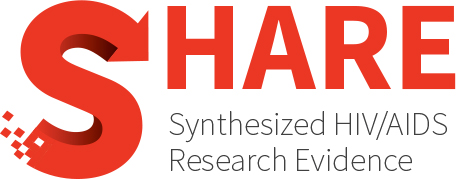Category Archives: Biomedical interventions
State of HIV research in Venezuela: A systematic review
BACKGROUND: Venezuela’s recent economic and political instability has severely compromised its healthcare infrastructure, impacting the management of infectious diseases, including human immunodeficiency virus (HIV). This disruption hinders progress towards the...
Single-session interventions to enhance HIV outcomes among adolescents and young adults: A systematic scoping review and implications for integrating HIV and mental health services
Significant progress has been made in HIV prevention and treatment for adolescents and young adults (AYA), but integrating mental healthcare remains essential to address risks and improve treatment engagement. Single-session...
Network meta-analytical investigations of the performance of HIV combination prevention strategies for Indigenous populations
BACKGROUND: Indigenous populations worldwide face a disproportionate burden of HIV due to structural inequities, cultural marginalization, and limited access to health services. Despite growing recognition of the need for culturally...
Mobile health intervention tools promoting HIV pre-exposure prophylaxis among adolescent girls and young women in sub-Saharan Africa: Scoping review
BACKGROUND: In 2022, 3100 adolescent girls and young women in sub-Saharan Africa experienced new HIV infections each week. HIV pre-exposure prophylaxis (PrEP) is effective at preventing HIV but has limited...
Cost-effectiveness analyses of adolescent- and young-adult-focused HIV interventions incorporating HIV transmission: A scoping review of modeling methods and proposed guidance
BACKGROUND: Adolescents and young adults (AYA) are disproportionately affected by human immunodeficiency virus (HIV) globally, with high-burden population subgroups differing across regions. Cost-effectiveness modeling analyses of AYA-focused HIV interventions have...
Tetracycline-resistant Neisseria gonorrhoeae global estimates-impacts on doxycycline post-exposure prophylaxis implementation and monitoring: A systematic review
Objectives Doxycycline post-exposure prophylaxis (doxyPEP) can reduce incident sexually transmitted infections including gonorrhoea for MSM and transgender women. Its effectiveness depends on the level of tetracycline resistance in Neisseria gonorrhoeae, which...
Implementation of trauma-informed care into clinical HIV prevention and care settings: A decade of limited progress
PURPOSE OF THE REVIEW: Trauma is common among people living with or at risk for HIV and associated with increased HIV risk and worse HIV care outcomes. Trauma-informed care (TIC)...
HIV post-exposure prophylaxis in community settings and by lay health workers or through task sharing: A systematic review of effectiveness, case studies, values and preferences, and costs
INTRODUCTION: Post-exposure prophylaxis (PEP) for HIV prevention has been inadequately promoted, provided and used. Expanded access and task sharing could increase the HIV prevention impact of PEP, but scientific evidence...
User preferences on long-acting pre-exposure prophylaxis for HIV prevention in Eastern and Southern Africa: A scoping review
BACKGROUND: Novel formulations for pre-exposure prophylaxis (PrEP) such as injectables, implants, and intravaginal rings are emerging as long-acting alternatives to daily pills for the prevention of HIV. Eastern and Southern...
